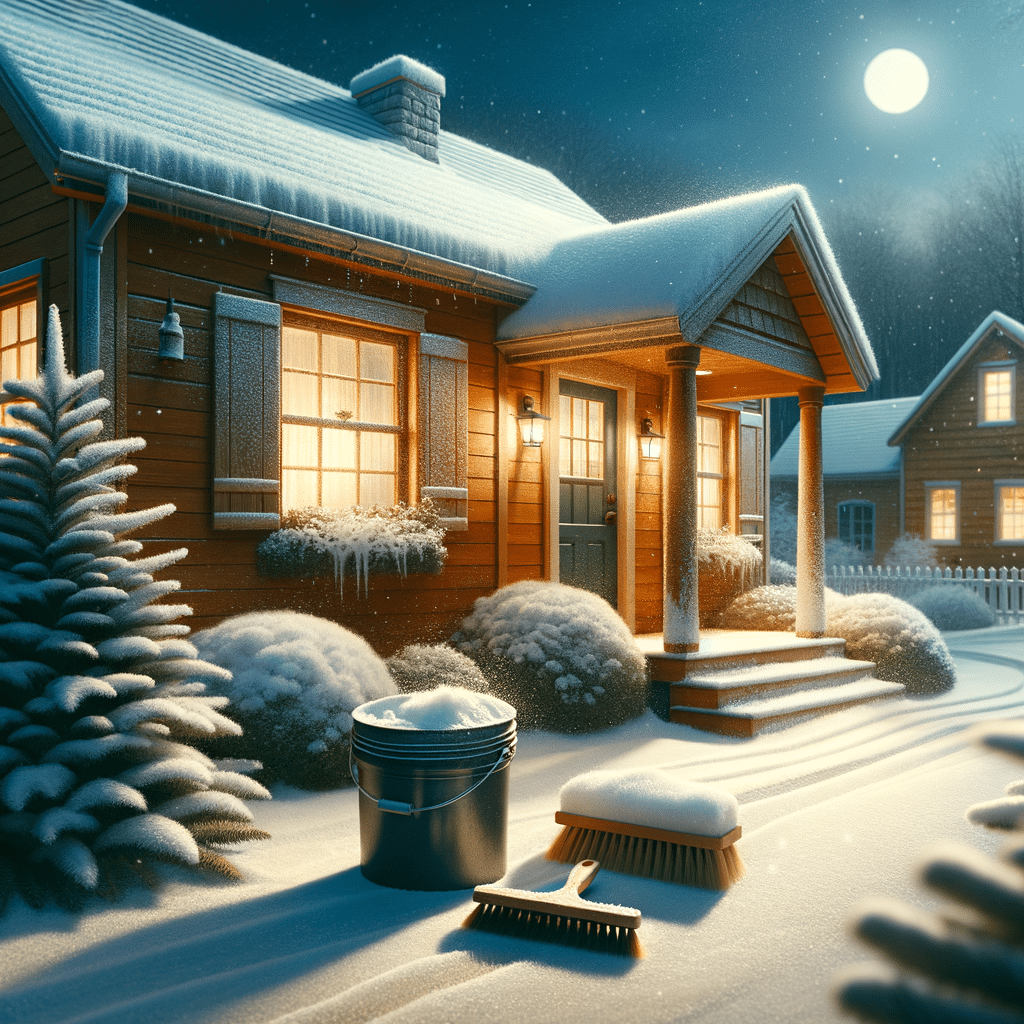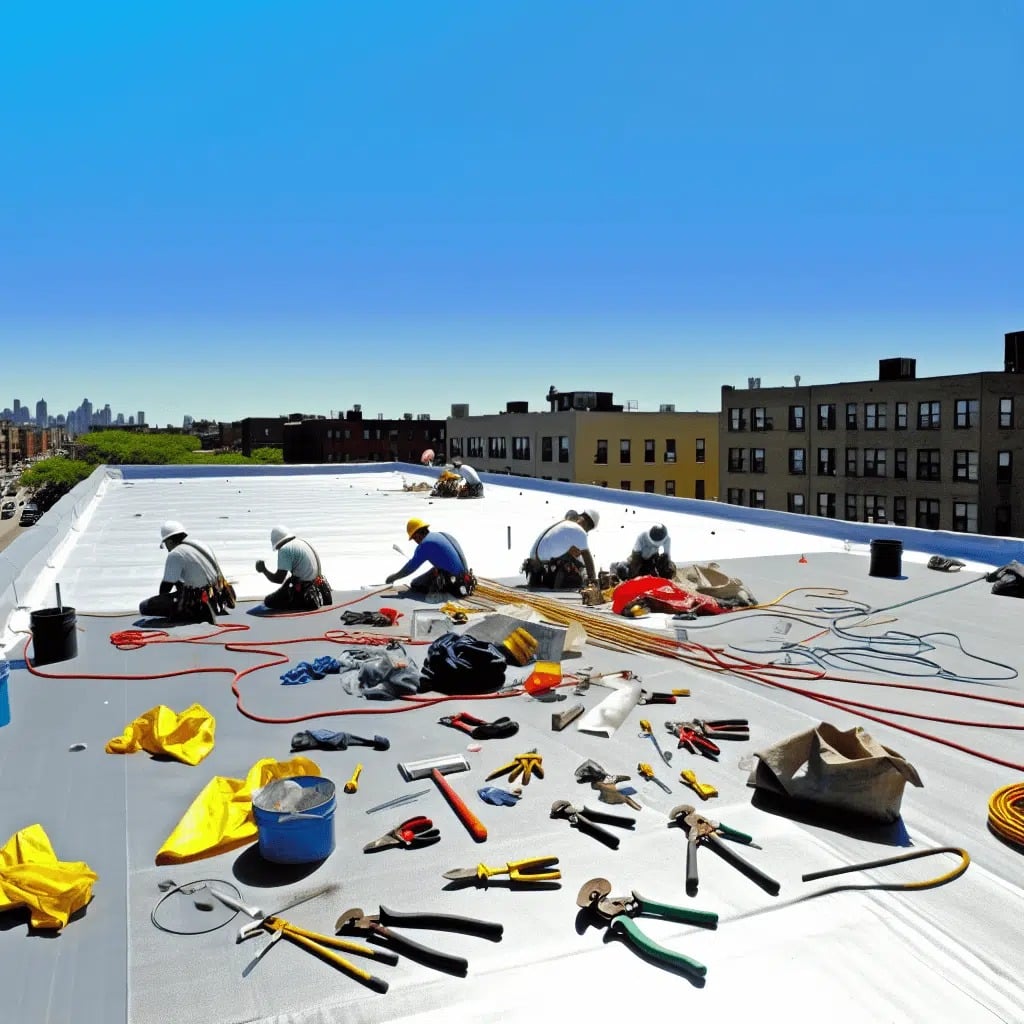Prepare Your Newport Home for Winter’s Wrath
As the golden hues of fall give way to the crisp whites of winter in Newport, homeowners must turn their attention to the preservation of their wooden exteriors. The imminent arrival of snow, ice, and freezing temperatures can wreak havoc on unprotected wood siding, making preventative care not just advisable, but essential. Immediate action is necessary to avert costly repairs and maintain the beautiful appearance of your abode. It’s not just about enduring the winter; it’s about coming through it unscathed, with your home’s charm intact. Indeed, the time to shield your wood siding from winter’s harsh embrace is now.
Let’s delve into why this maintenance is indispensable for the long-term wellbeing of your home. Untreated or poorly maintained wood siding can become a gateway for moisture, leading to swelling, warping, and even rot—issues that are exacerbated in the moist conditions of winter. To prevent this, applying water-repellent preservatives offers an effective line of defense against the season’s moisture-laden assaults. Furthermore, the rigorous climate of Newport’s winter emphasizes the need for these preventative measures. The investment in maintaining your wood siding is truly an investment in your home’s future, sparing you from costly damage control when spring thaws the winter’s frost.
Ignoring these warnings could result in detrimental impact to your domicile’s wood siding—the very armor that stands between your residence and the ravages of winter. A simple crack or split unnoticed can welcome a siege of moisture that compromises your home’s structural integrity and aesthetic appeal. Therefore, conducting regular inspections for signs of wear and damage is paramount before the onset of the cold season. By taking stock of the current state of your siding, you can take proactive steps towards remediation and fortification. In essence, the care you invest in today is the damage you prevent tomorrow.
Insightful Strategies for Safeguarding Your Siding
Wood responds to changes in temperature and humidity; cold weather can cause it to contract, while moisture can lead to expansion. This natural ebb and flow can unfortunately create gaps and fissures over time, where snow and ice can lodge and cause significant damage. Indeed, the robustness of your home’s siding hinges on understanding and acting upon these foundational principles of wood behavior. To preserve the integrity of your siding, it’s crucial to ensure proper sealing is in place before the winter chill sets in. Sealed wood is better protected against the elements, thus providing peace of mind all winter long.
Choosing the right preparatory materials is just as important as understanding the why behind winter care for wood. Not all preservatives and paints are created equal, and the efficacy of your winter siding maintenance will depend on the quality of the products you choose. Look for products specifically designed to withstand harsh weather conditions, and don’t skimp on quality for cost’s sake. As Rinaldi Roofing experts suggest, a good preservative and a coat of high-quality paint or stain can do wonders for extending the life of your wood siding. You can explore more about Rinaldi Roofing’s recommended products and services by visiting their website.
An often overlooked yet critical component of siding care is ensuring proper water runoff. Without a drip edge or an efficient gutter system, water can pool and seep into the wood siding, leading to decay and mold growth. It’s essential to inspect and clear your gutters before the winter precipitation increases. Additionally, trimming overhanging branches near your siding can prevent physical damage and moisture retention from melting snow. Taking these precautionary steps shields your home from excessive moisture and ensures it stands strong against winter’s toughest trials.
Final Considerations for Wood Siding Durability
The diligence with which we approach siding care on the cusp of winter can define the longevity and appearance of our homes. As we transition from the vibrant colors of fall to the stark serenity of winter, the upkeep of your home’s exterior should never wane. Regular maintenance is the cornerstone of preserving wood siding, with a fresh coat of paint or stain acting as a robust barrier against the cold. It’s about being proactive rather than reactive; initiating these steps now can deter a multitude of issues when warmer weather returns. Think of winterizing your wood siding not as a chore, but as a proactive measure to protect and enhance your home’s value and curb appeal.
It cannot be overstated that the care you invest in your wood siding is reflected in the strength it provides. Whether bracing against the chills of November gusts or the weight of a February snowfall, well-maintained siding stands as your home’s first defense. Beyond aesthetics, it’s about safeguarding your sanctuary, ensuring that the winter’s bluster is kept firmly outside, where it belongs. For those seeking assistance, professional services such as those at Rinaldi Roofing are invaluable in equipping your home to face the winter head-on. Their expertise in residential roofing and siding provides an extra layer of security and peace of mind.
So as the days shorten and the air chills, let’s embrace the peace of mind that comes from knowing our homes are well-prepared. Our commitment is to enable homeowners to face the winter with confidence, armed with the knowledge and support they need. Your home is more than a structure; it’s a haven, a place of warmth and comfort, no matter what the season brings. Trust in the strength of your winterized wood siding, but also know that help is merely a call away. Rinaldi Roofing’s dedication to your home’s integrity is your assurance of quality and trust throughout the seasons.
Expert Advice on Winter Wood Siding Care
Tip 1:
Ensure your wood siding is properly sealed before winter sets in. A well-sealed exterior will repel water and prevent the wood from warping or rotting when exposed to snow and freezing temperatures.
Tip 2:
Inspect your wood siding for any signs of existing damage, such as cracks or holes. Addressing repairs promptly will prevent moisture from seeping in and causing further deterioration during the winter months.
Tip 3:
Consider installing a drip edge or a gutter system if one is not already in place. These features help to divert water away from your siding, reducing the risk of water damage during winter storms.
Tip 4:
Trim back any trees or shrubs that are in close proximity to your siding. Overhanging branches can scrape against siding during windstorms and deposit excess moisture, which can contribute to wood rot.
Tip 5:
Stay on top of snow removal near your wood siding. Allowing snow to pile up against your siding can lead to moisture problems, so it’s important to shovel it away regularly throughout the winter season.
Your Siding Winter Care Questions Answered
How often should wood siding be treated before winter?
Ideally, wood siding should be treated every two to three years, with an inspection at the start of each winter season to determine if additional maintenance is needed.
What signs indicate my wood siding has weathered winter damage?
Signs of winter damage to wood siding include splitting, warping, the presence of mold or mildew, and discoloration, indicating moisture penetration or breakdown of protective coatings.
Is it possible to apply a new coat of paint or stain to wood siding during cold weather?
Applying paint or stain in cold weather is not recommended; optimal conditions are typically above 50°F with low humidity for proper adherence and drying.
What can I do to protect my wood siding against accumulating snow and ice?
Regularly remove snow and ice from adjacent surfaces, and apply a waterproof sealant to the siding to prevent moisture penetration and potential damage.
Are there any maintenance steps specific to winter that can extend the life of my wood siding?
Ensure proper sealing and insulation, clear gutters and downspouts, and consider adding a layer of protective paint or stain before the harsh weather arrives to extend your siding’s lifespan.



